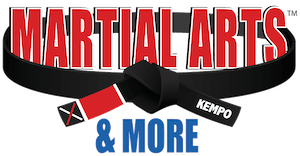
Pancrase is the most complete martial arts fighting system. It is the original Mixed Martial Arts (MMA). It incorporates all the striking of Muay Thai and Karate, all the takedowns of wrestling, all the submission of Brazilian Jiu Jitsu, and all the throws of Judo. It can be used as a self-defense system but is designed to fight not necessarily defend yourself from and attacker and get away. Our basic classes are designed for the student to learn the art. Anyone can train. There is not requirement to get in the cage and fight. That is an option for those that want to but not for the average student learning the art. Fight team and sparring practices are not part of the basic classes. You can earn rank as a self-defense practitioner or as a fighter.
History of PANCRASE
“The Father of Mixed Martial Arts”
The origin of UFC-type Mixed Martial Arts (MMA) dates back to the ancient Greek Olympic games. First introduced in 648 B.C. at the 33rd Olympiad, a form of free-style martial arts called Pancration (Pancrase) would soon become the most popular and demanding of all athletic sports. Olympic Pancration integrated every physical and mental resource; hands and feet, mind and spirit, in the closest simulation of competitive fighting that any culture has ever allowed. It was considered the ultimate Olympic sport for over a thousand years.
However, it was more than just a sport. Called by Philostratos the “Worthiest ontest in the Olympiads and the most important preparation for warriors”, Pancration was the martial training of the Greek and Spartan armies and was taken to India with the legions of Alexander the Great, where it became the accepted ancestor of the oriental martial arts.
Today, Pancrase MMA is experiencing a worldwide re-birth with an increasing number of martial artists and athletes being drawn to the ancient “King of Olympic Sports”. Pancrase MMA is the ultimate martial art of modern times.
Our family friendly school offers beginner through advanced instruction in the core mixed-martial arts. The curriculum is specifically designed for non-fighters and those interested in the other important areas of mixed martial arts; self-defense, fitness, confidence-building, personal-growth, and the sporting and recreational aspects. Personalized, small-group classes can accommodate most everyone. Providing safe, effective and fun instruction is our commitment to you.
Earn Belt Rank – Your progression as a mixed-martial artist will be rewarded by belt rank promotions. Pancrase MMA belt ranks and black belt degrees are among the most prestigious in the world.
Looking for fitness and conditioning training? Look no further. Our fitness system incorporates the same cutting-edge methods used by champion UFC fighters. Professional athletes from football, basketball, hockey and other major sports are now incorporating MMA fitness in their training programs.
Remember, our school is much more than just a place to learn martial arts or become physically fit. When you join, you become a member of a family that is the cornerstone of our organization. We welcome any and all skill and physical fitness levels. Contact Sensei Wright at wright.james56@yahoo.com to see how you can become an affiliate.
MORE ABOUT PANKRATION
The origins and exact age of this fighting form, however, are hard to determine.
Legend says that Hercules developed Pankration in order to become more formidable in wrestling tournaments. Another origin story by Plutarch is that Theseus created the Pankration in his battle with the Minotaur. While these are just myths, the fact that Pankration is connected to these revered heroes shows its importance to Ancient Greek culture. All the more evidenced by the fact that Pankration was one of the main events of the ancient Olympic games.
But what exactly is Pankration? And how was this martial art practiced?
To begin with, Pankration means “all power”. It was known in ancient times for its ferocity and allowance of such tactics as knees to the head and eye gouging.
One ancient account tells of a situation in which the judges were trying to determine the winner of a match. The difficulty lay in that fact that both men had died in the arena from their injuries, making it hard to determine a victor. Eventually, the judges decided the winner was the one who didn’t have his eyes gouged out. Over time, however, maneuvers like eye gouging were discouraged to prevent such unpleasant incidents.
While Pankration may seem from these stories to be little more than a brutal free for all, it did have its formal stances (Stasi), punches (Efthia), kicks (Laktismata), and blocks (Apokrousis).
The only rules that were enforced by referees, with beating sticks in hand, was no gouging (eventually) or biting. This meant that competitors could be very creative with their attacks and defense, resulting in a plethora of options. Indeed, describing every Pankration movement would require writing a complete book.
[Attic black-figure skyphos] In the end of the day though, the main goal in a match was to get your opponent to submit by raising an index finger in the air as a yield signal. The most common way to get this submission was a movement called a “choke”. This could be done with a front grip, where the trachea and windpipe are squeezed, or with a rear choke, where the caryatid arteries are closed by a forearm from behind.
Aside from chokes, an array of kicks, punches and blocks were used. Artist depictions on pottery show kicks to the stomach and shins. Punches had the best range of options from jabs to uppercuts and hooks. While blocking involved a key principle that is still taught by martial artists today, adapting to your opponent and looking for opportunities to counter their movements.
An example of this would be when your opponent is throwing a hook punch and your elbow point is used to absorb the impact of the knuckles. Then, while your opponent’s arm is extended, you punch the bicep and forearm crease with your free limb – effectively immobilizing your opponent’s remaining arm.
[Panathenaic prize amphora] This type of movement shows an interesting similarity to techniques found in Eastern martial arts, such as Kung Fu, Karate and Muay Thai.
But maybe this isn’t surprising at all… especially when you consider that Alexander the Great was a noted Pankration fighter. The famously ruthless Macedonian could have brought the martial art as far as his conquests in the Indus Valley, where cultural exchange could have allowed Pankration to spread to China and South East Asia.
While we we’ll never know for certain, perhaps in this way Pankration may very well be the mother of all martial art forms. The ancient Greeks left a tremendous legacy that is regularly represented by their art, literature and philosophy, but it is often overlooked that they did likewise in the field of fighting as well.

